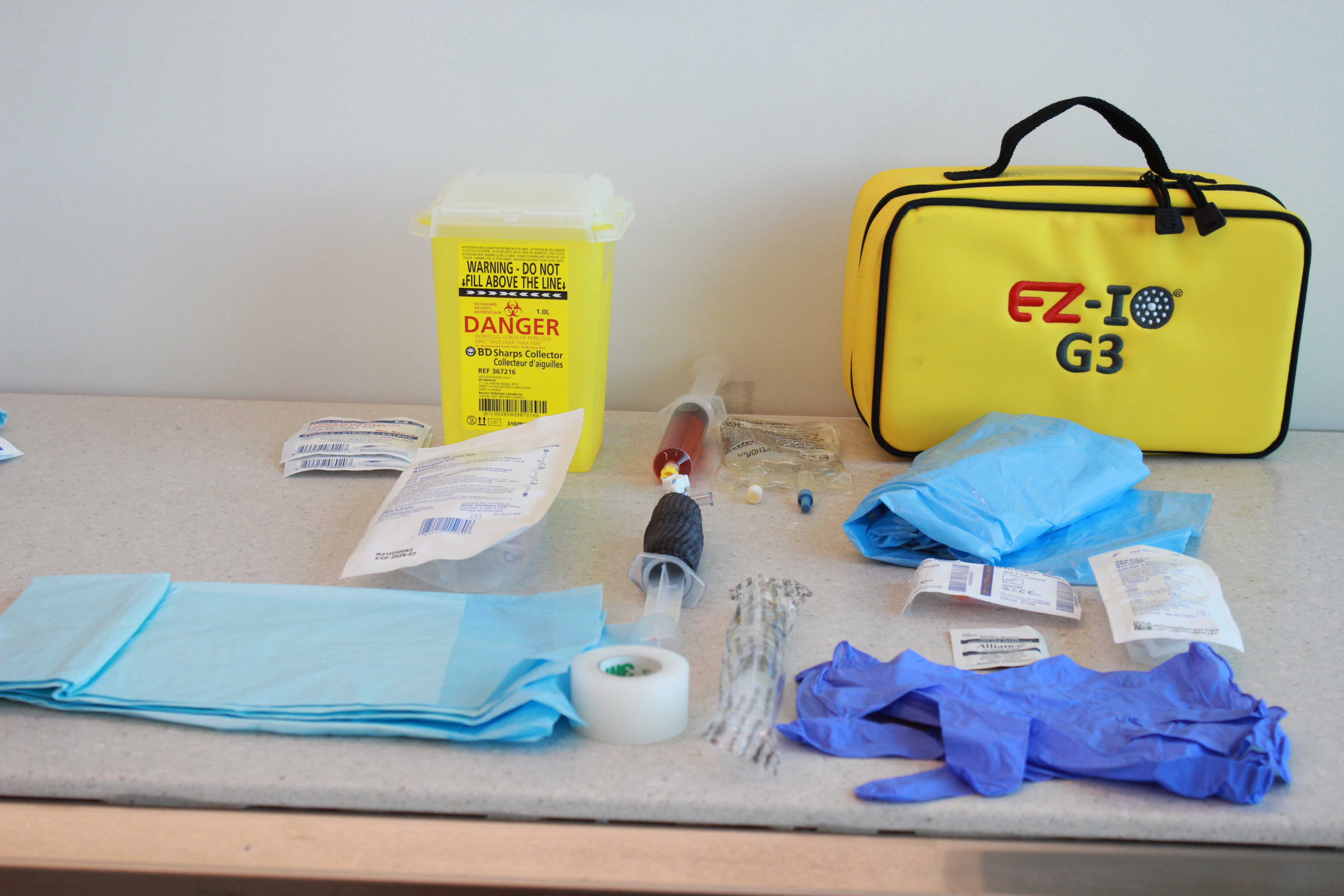Intraosseous (IO) Insertion Introduction Module
Introduction
Welcome to the intraosseous (IO) insertion module! Here you will learn how to create your own completely customizable IO insertion task trainer, including ones with variable depths and sizes, for infants up to bariatric patients, and ones that can be attached to a manikin.
In this section there will be:
- A clear list of materials needed to build the task trainer
- Step-by-step instructions for creation of the task trainer
- Pictures demonstrating key steps for creation and use of the task trainer
- A video with audio descriptions for creating the task trainer, and;
- A cost breakdown for the task trainer, including material sourcing considerations
Once you have created your task trainer:
- The ‘Skill Station Set-up Guide’ will identify and show what supplies you should lay out and how you should set-up your task trainer to promote learner success.
- The ‘Teaching / Feedback’ section will provide key frameworks for how to teach this skill and provide constructive feedback to participants based on their level of competency.
- The ‘Evaluation and Resources’ section will list and link to peer-reviewed and evidence-based checklists that you can use to evaluate on the skill of IO insertion.
Disclaimer: this page will reference certain products for skills station set-up. This is not an endorsement or sponsorship of either of these products. Individuals are invited to use alternative like-products for their prototypes. Individuals who use like-products as substitutes should follow the package instructions.
Skill Station Set-up Guide
| IO Set-up Supplies | |
|---|---|
|  |
Teaching / Feedback
Modified Walker & Peyton Four-Step Approach (Afzali et al., 2017)
| 1. Demonstration: Observe the instructor perform the skill to best practice standards in real-time |
| 2. Deconstruction: Instructor performs the skill slowly, breaking down the steps and explaining |
| 3. Formulation: Instructor performs the skill while being talked through it by the learner |
| 4. Performance: Learner performs the skills while being given feedback by instructor. Repeat as necessary. |
N.O.D.O.F.F tool for Technical Skills Retention (Ibrahim, 2017)
- Needs Assessment
- Objectives
- Demonstrate
- Observe
- Feedback in Action
- Feedback after Action
Evaluation
Oriot D, Darrieux E, Boureau-Voultoury A, Ragot S, Scépi M. Validation of a performance assessment scale for simulated intraosseous access. Simul Healthc. 2012;7:171–5. Available from: http://www.ncbi.nlm.nih.gov/pubmed/22511182.
Resources
Dornhofer, P. & Kellar, J. Z. (2023). Intraosseous Venous Access. StatPearls. https://www.ncbi.nlm.nih.gov/books/NBK554373/
Liu, Y. T. (2023). How To Do Intraosseous Cannulation, Manually and With a Power Drill. Merck Manuals. https://www.merckmanuals.com/en-ca/professional/critical-care-medicine/how-to-do-peripheral-vascular-procedures/how-to-do-intraosseous-cannulation,-manually-and-with-a-power-drill
Nickson, C. (2015). Intraosseous access. Life in the fast lane. https://litfl.com/intraosseous-access/
Teleflex. (2019, Jul 3). Arrow® EZ-IO® System - Proximal Tibia Site Identification and Needle Insertion (Adult, Alert) [Youtube]. https://www.youtube.com/watch?v=ZZMAVZhrDHE
Teleflex. (2018, Jun 14). Arrow® EZ-IO® System - Proximal Humerus Site Identification/Insertion (Adult, Animation) [Youtube]. https://www.youtube.com/watch?v=3ojdhEgw1zM
References
Afzali, M., Kvisselgaard, A. D., Lyngeraa, T. S., & Viggers, S. (2017). Intraosseous access can be taught to medical students using the four-step approach. BMC medical education, 17(1), 1-6. https://bmcmededuc.biomedcentral.com/articles/10.1186/s12909-017-0882-7
Ibrahim, M. (2017). The use of a novel teaching rubic improves technical skill acquisition and retention. McGill University. https://escholarship.mcgill.ca/downloads/c534fr44f.